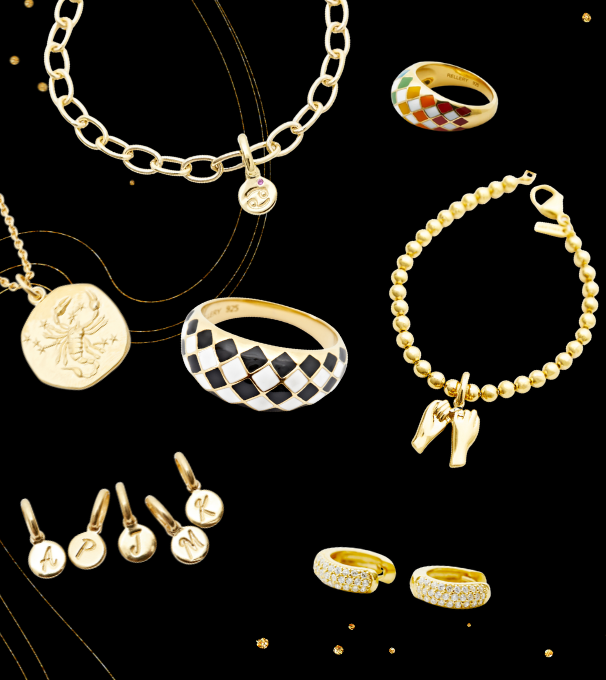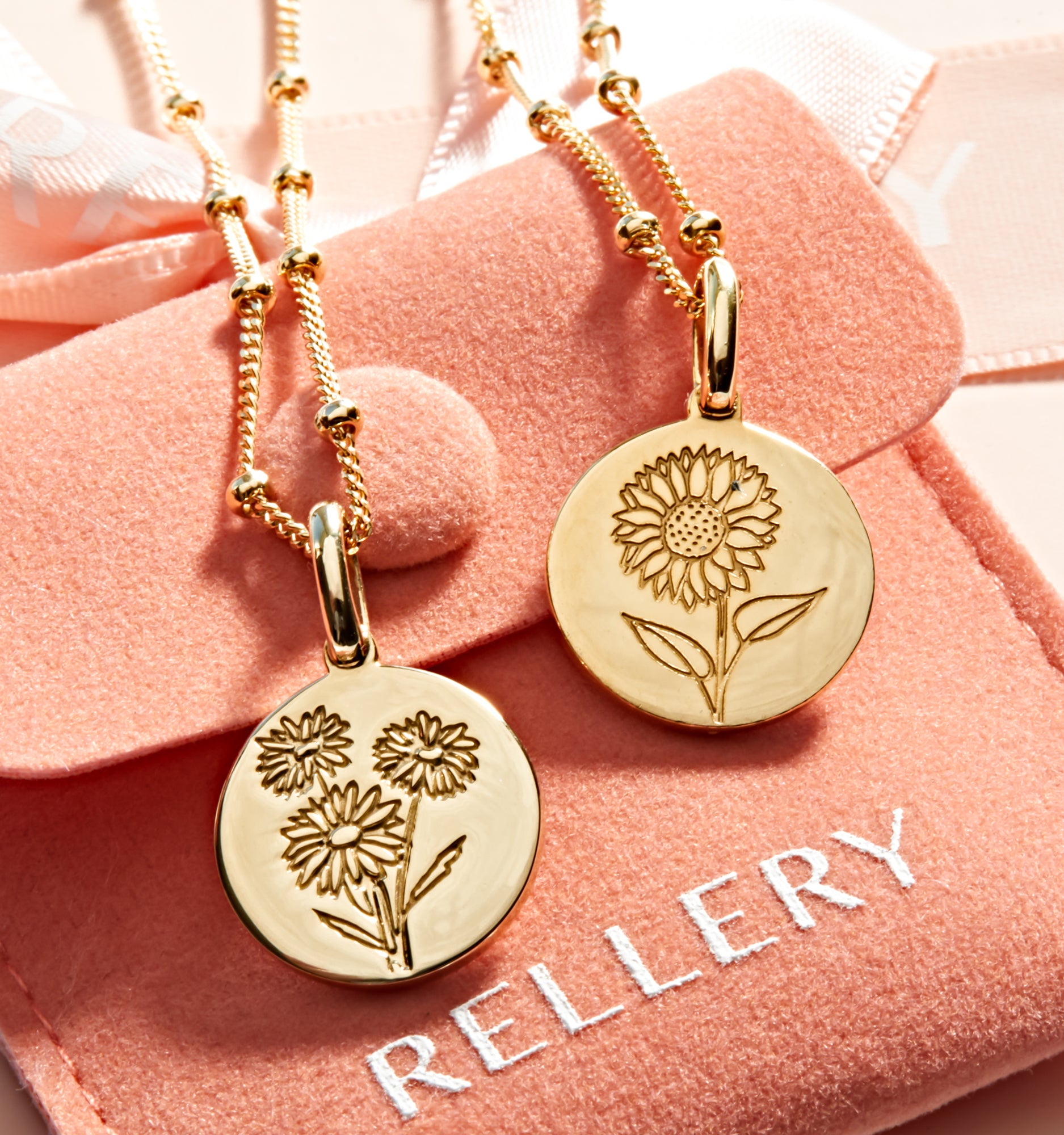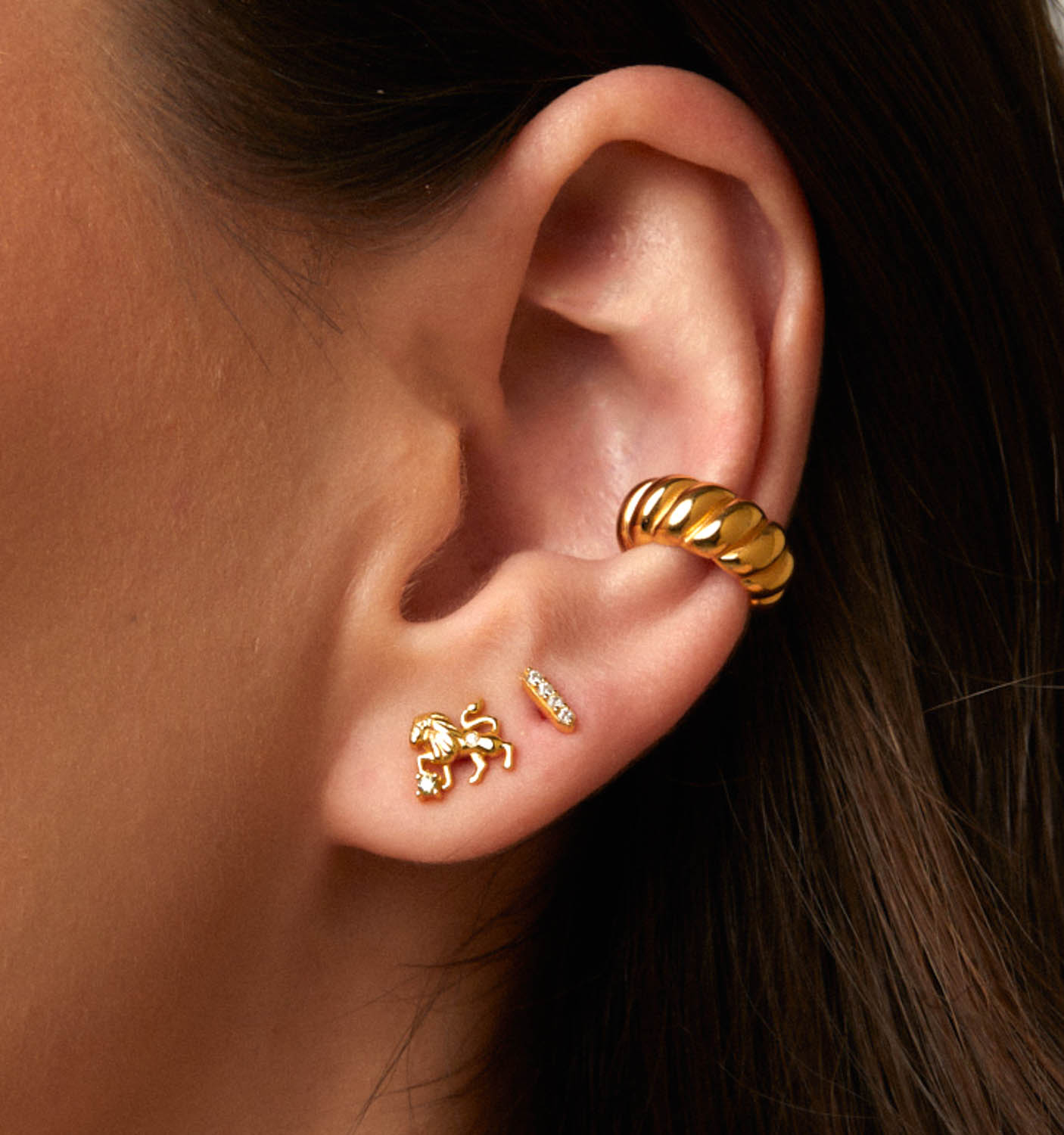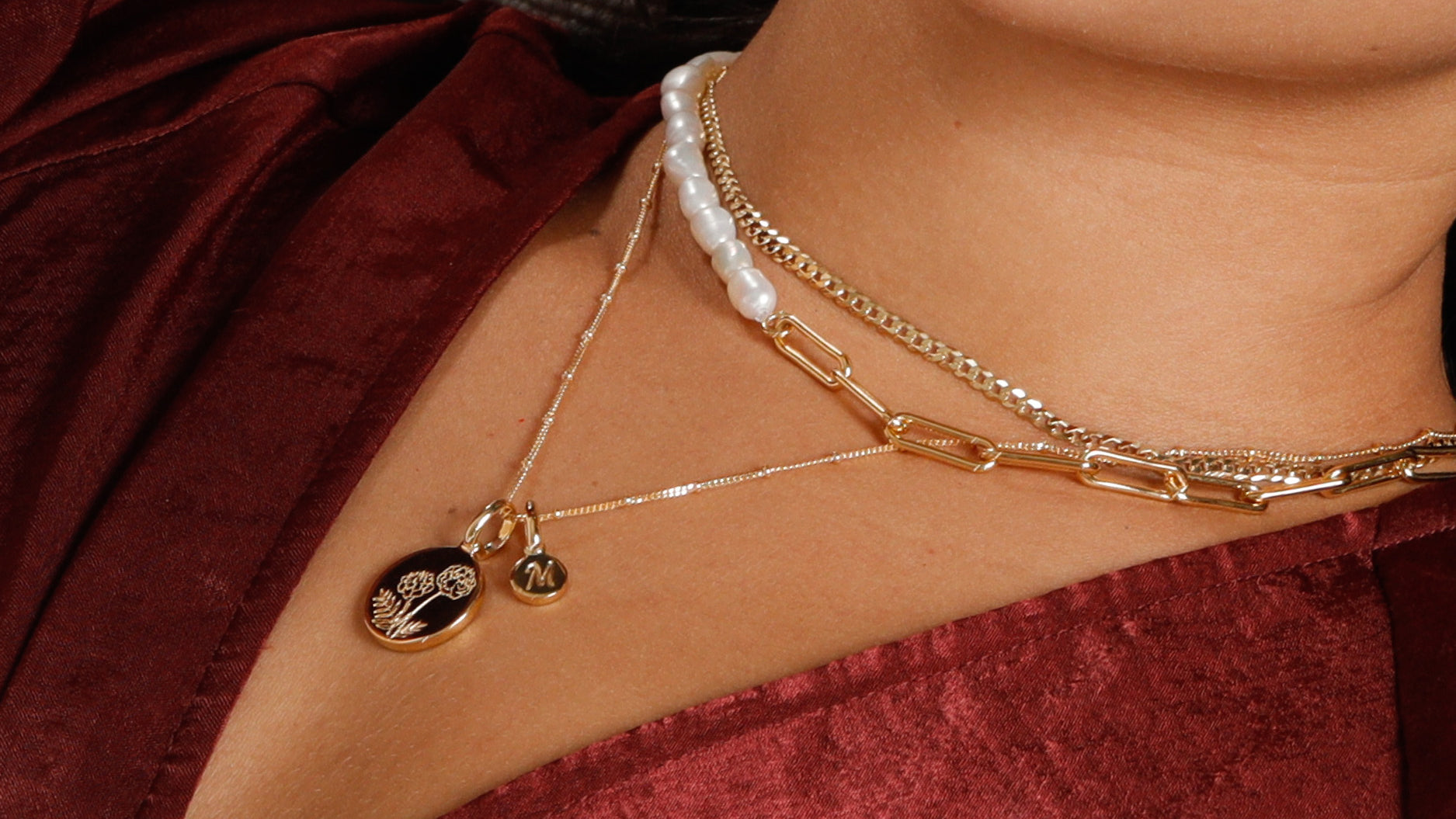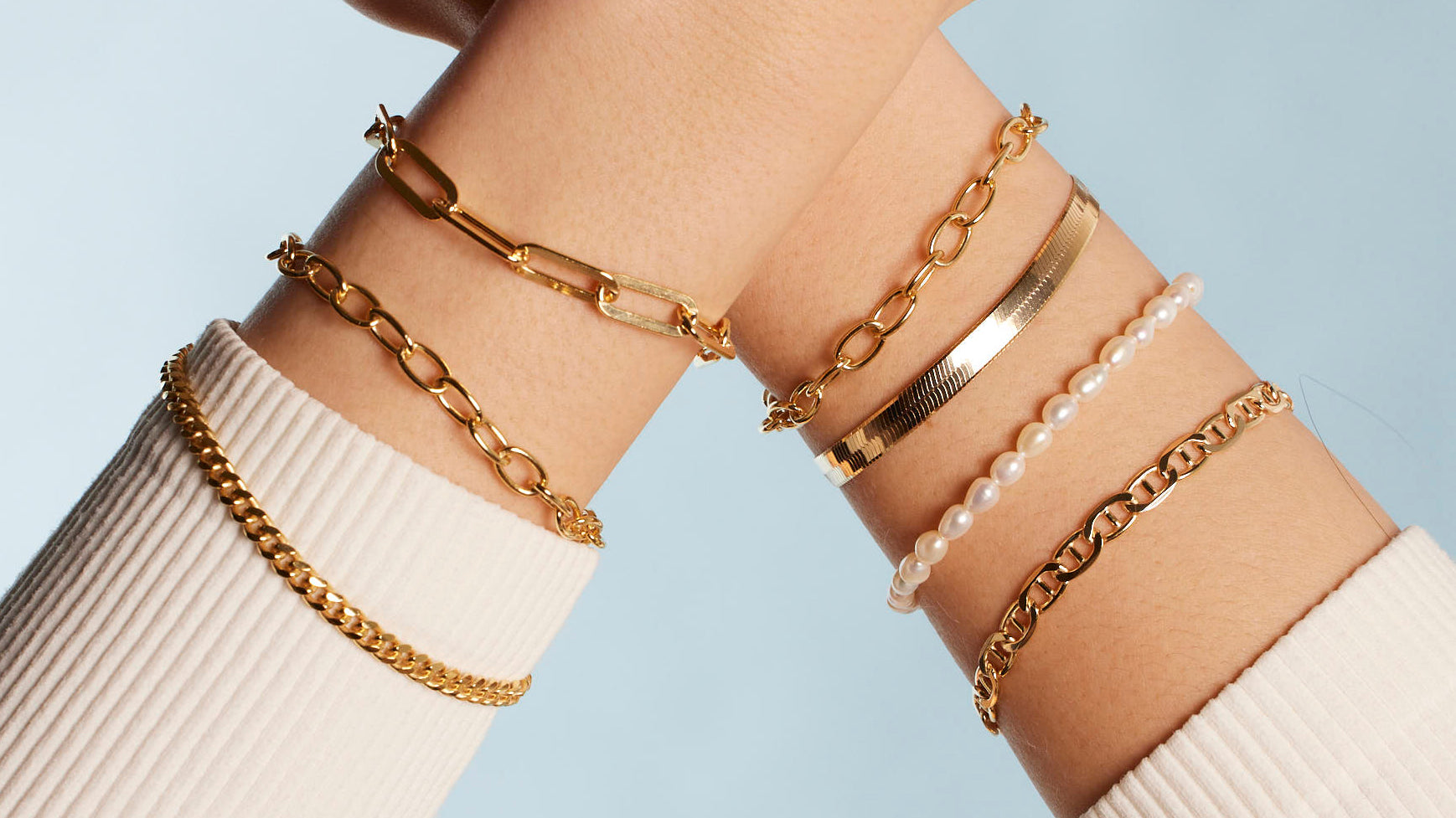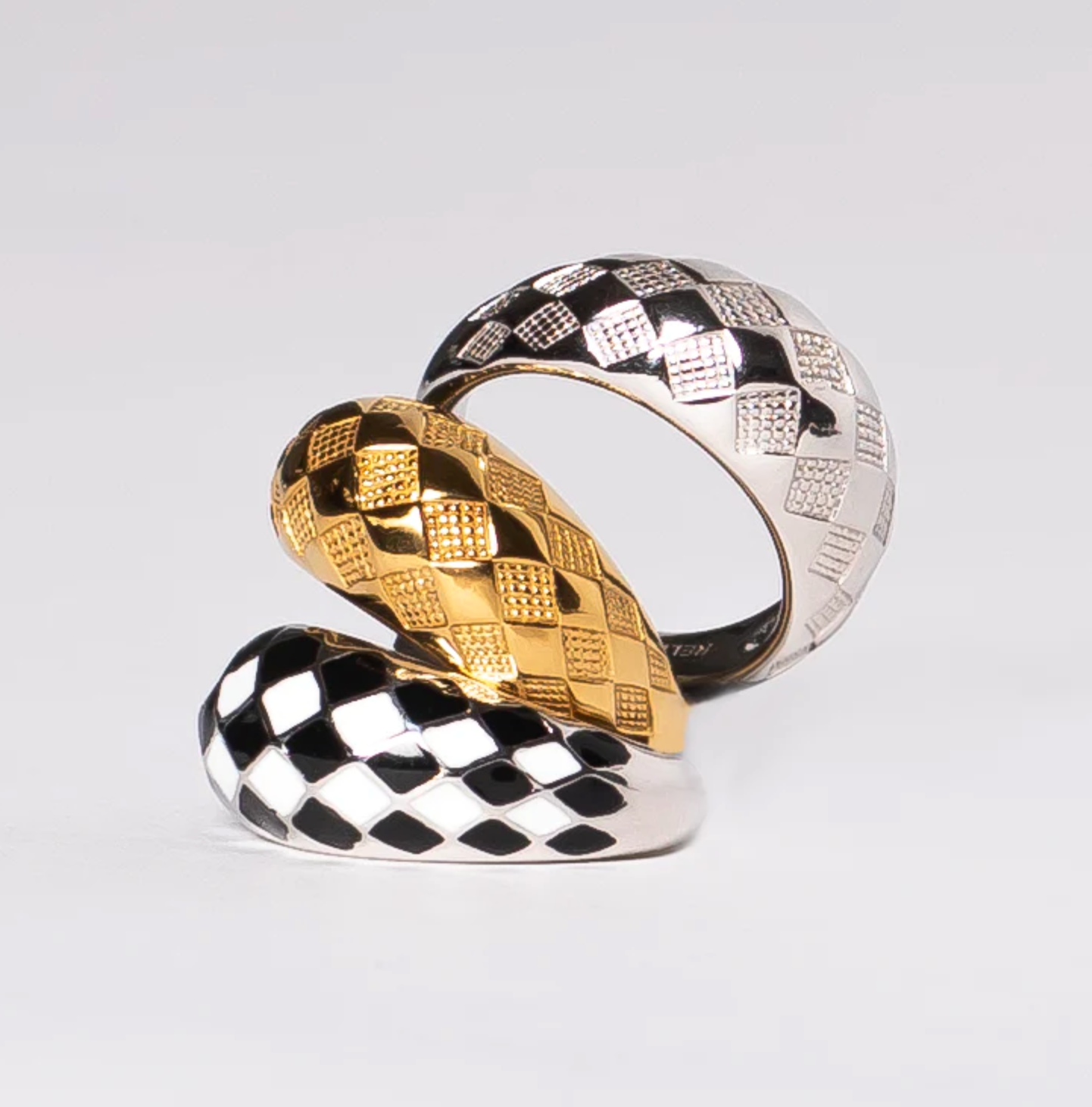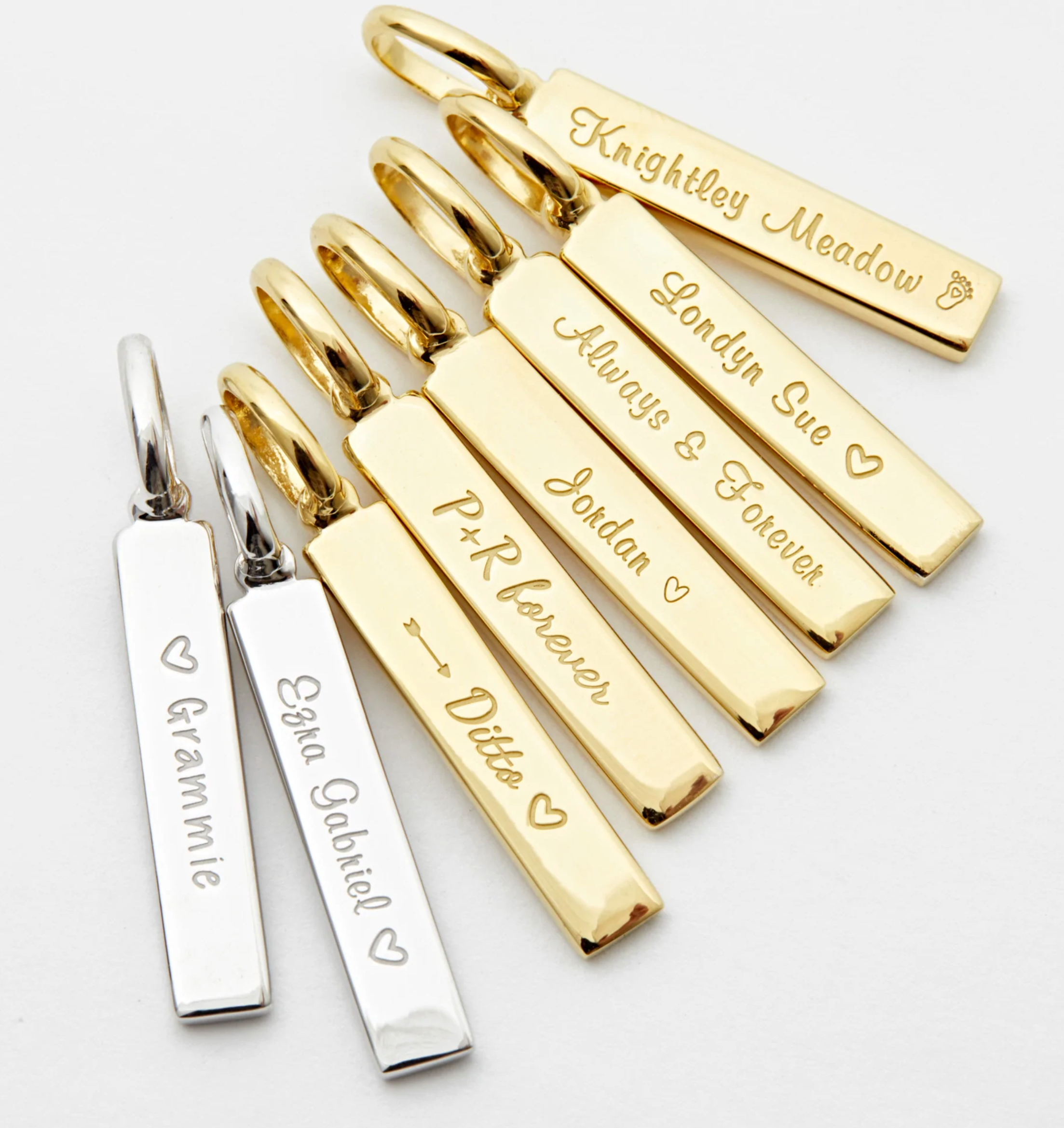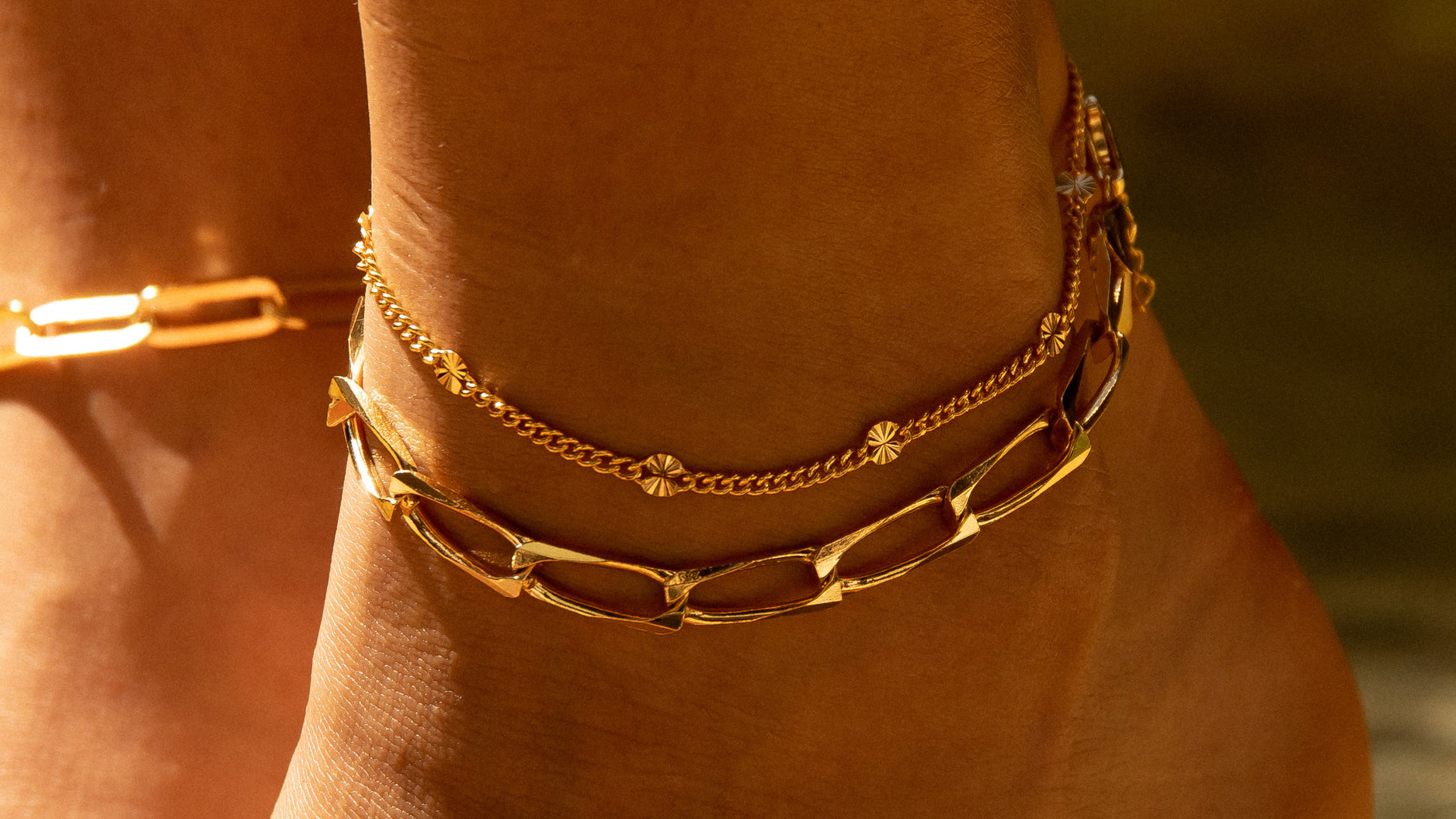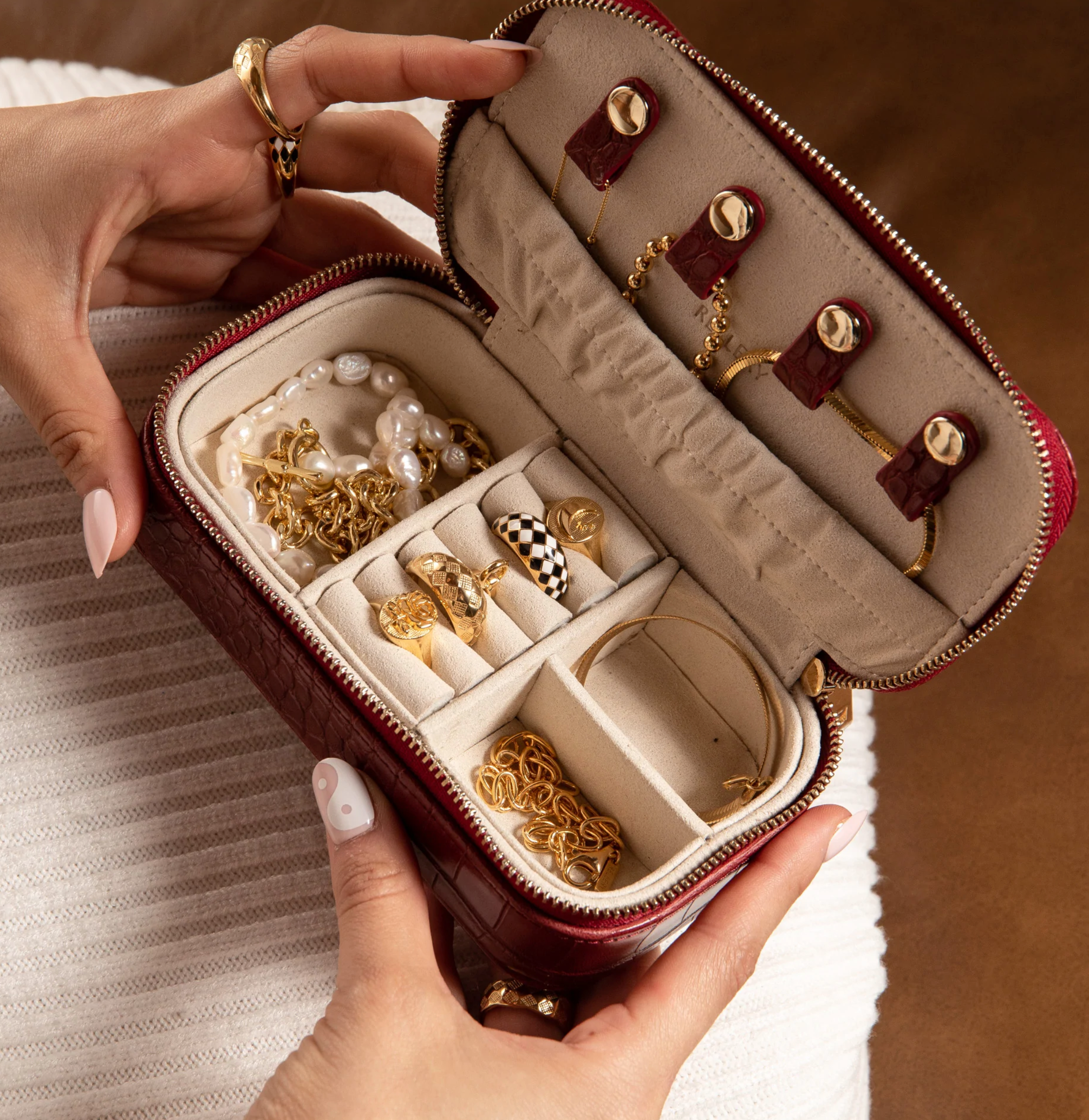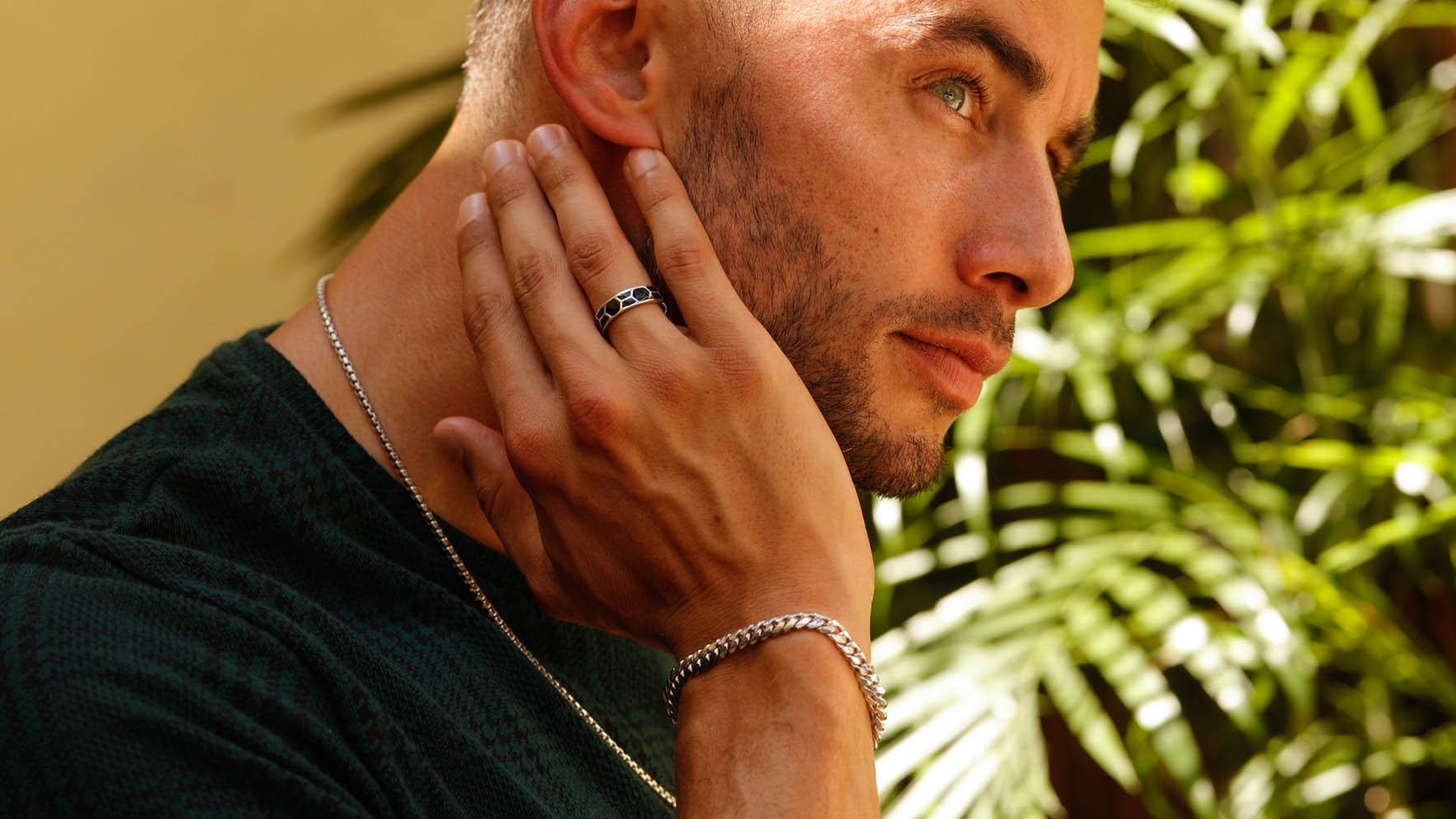Many of us wear jewelry daily and we don’t like constantly taking it on and off, especially when we’re workin’ something fierce!
In the same vein, we sometimes forget to remove our jewelry before jumping in the shower or going for a swim at the beach.
We get asked a lot about how water affects rings, necklaces, bracelets, and earrings. People want to know if certain metals or stones will react negatively to water exposure.
Whether you have sterling silver pieces, costume jewelry, or something that you’ve had forever and don’t even know what material it is, you’ll find some general guidelines below that will help you decide “yes” or “no” when it comes to wearing your pieces before swimming or showering.
General Guidelines for Wearing Jewelry in Water
GENERAL RULE OF THUMB: It’s best to take off jewelry before you shower or jump in the ocean.
Shower water comes from local water facilities that filter out debris but also add chemicals to clean and sanitize our drinking supply. And, if you have hard water coming out of the pipes, it’s kind of good to know if it will cause reactions with your jewelry.
If your jewelry collection is of high quality and you make sure to dry it off, it should be a-okay to wear your bling in the water.
However, be careful of any beading and gemstones that may be present. If the setting is loose, you may have to dig those gems out of the drain! In addition, gemstones will gunk up and lose their luster if not properly maintained.
Also, I’m sure you’re aware that most of your shower products contain chemicals. These products may cause grime to build in earring mountings and could cause deterioration, discoloration, or fading of metals over time.
Showering or Swimming with Different Jewelry Pieces
Water is essential for life to persevere. But, water also cuts deep into the Earth over time, and it can manipulate your jewelry if you’re not careful.
One jewelry mistake many of us are guilty of making is misidentifying the metals present in our rings, bracelets, and necklaces before we expose our jewelry to the elements (including your body and all of its sweat and oils). You can get metal-testing kits to help you determine what’s in your pieces, but there are some general guidelines you can follow.
Let’s ID some popular types of jewelry and how they react to water and other chemicals.
Diamonds
As nice as you may look with your fave diamond studs, just make it a hard rule to not wear them in the shower or ocean. You’ll lose the luster of your diamonds, and if the setting is loose, it could be super bad—like losing-your-diamonds-down-the-drain bad.
The same goes for diamond rings, necklaces, and bracelets. Keep your bling dry by removing it before you set foot in a water source.
Sterling Silver Jewelry
Sterling silver will tarnish faster with repeated exposure to water. So if you’re wearing any, take it off before taking a dip or washing.
Salt, chlorine, and chemicals in your shower products will tarnish sterling silver. It may not be an immediate threat to new sterling silver jewelry, but it can damage your pieces over time.
Cut out a few minutes every month, and wipe your sterling silver off with special silver wipes. You’ll thank yourself later.
It’s best just to avoid a sterling silver/water combo.

Gold Jewelry
For gold-plated jewelry, you’ll want to steer clear of water while wearing it. Gold-plated jewelry tends to chip and scratch the more it’s exposed. And, it can become dull. When gold is dull, it kind of looks like a fake.
If your jewelry is solid gold (rose, white, or yellow gold), you’re usually in the clear. This is generally true for gold favorites from 10-karat to 18-karat. Just be sure to wipe it down with a soft cloth after swimming or bathing to increase the lifespan of your pieces.
Gold-filled jewelry tends to fare just fine in the water since the layer of gold that’s plated onto the base metal tends to be pretty thick and sturdy. So go for it!
Costume and Fast-Fashion Jewelry
Showering with costume jewelry is not a good idea at all.
While costume jewelry may be affordable, manufacturers tend to use cheaper metals and materials like glue to design and create costume pieces.
For example, nickel is used (and isn’t regulated very well by governments) in a variety of jewelry pieces. And, as a consumer, you may not know that you can easily develop a nickel allergy with prolonged exposure. Water does nothing but exacerbates this potential threat so just don’t wear nickel-laden pieces when showering or swimming. It’s no bueno.
Also, costume jewelry may flake off in water. So just don’t--it’s not worth it!
If you haven’t been to your dermatologist in a while and you have a reaction, set up a patch test to find out what metals your body might not be so fond of.
Wood, Plastic, and Other Materials
It probably goes without saying that you don’t want to shower with your new peacock-feather earrings. Nor would you want to wear your family heirloom diamond studs when frolicking in the ocean.
With that being said, be careful of wooden jewelry. If it has been treated and has a gloss over it, it’s probably okay. However, when untreated wood gets wet, it may expand, dry out, and then break! So be careful.
Plastic and glass jewelry are generally okay to wear in the shower and at the beach. Simply wipe them down when you dry off or take them out to air dry. Be careful of any baubles or filigree that may come loose or be damaged on glass and plastic pieces.
Stainless steel is also a go for showering. Take off your stainless steel pieces before jumping in the ocean, though, as it does not do well with chloride. You’ll want to know whether or not it has any additional metals in it because the lower the quality, the higher the chance your stainless steel jewelry will tarnish. For durability’s sake, try to invest in surgical-grade stainless steel.
If you wear gauges, always double-check to ensure that they are secure before and after your water journey. It’s so annoying to find out later that a plastic security ring or clasp fell off your gauge!
Showering and Swimming with Jewelry
When all is said and done, it’s a good idea to remove your jewelry before going to the beach or taking a shower. Water can be corrosive to metals, and the chemicals we use every day can cause a host of issues with your fave jewelry picks.
You don’t want to damage your precious pieces, and no one likes to explain how the family heirloom was eaten by a dolphin on your surfing trip.
Whether you’re buying a gift for your BFF or having a treat yo’self day, it’s best to obtain high-quality jewelry at a fair price. That way, you won’t drain your bank account, but you can also ensure that your jewelry pieces will stand the test of time—and some wear-and-tear—for years to come.
Our collections rotate monthly so you’ll always have a fresh way to tell your story. And, Rellery’s quality jewelry is made ethically in the U.S. We cut out the middleman (thank heavens) so our handcrafted rings, bracelets, earrings, anklets and necklaces can be sold to you at a fair price. And the packaging is adorbs as well! Hint hint: great gift ideas!
Just be sure to inform your giftees about all water exposure info we gave you today!
Sources:
https://www.mayoclinic.org/diseases-conditions/nickel-allergy/symptoms-causes/syc-20351529



